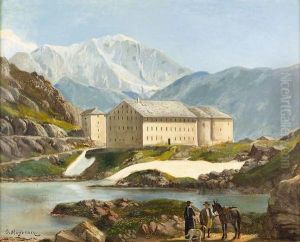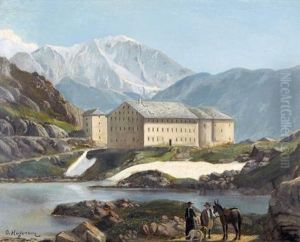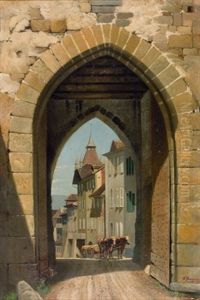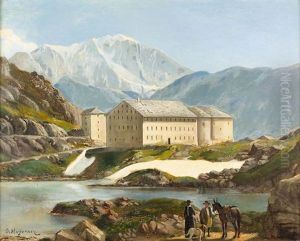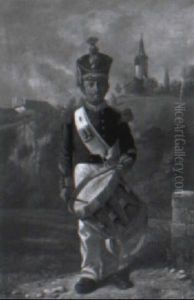Oscar Huguenin Paintings
Oscar Huguenin was a Swiss painter and engraver, born in 1843 in Le Locle, a town in the Neuchâtel canton of Switzerland, known for its rich heritage in watchmaking and fine arts. Huguenin's artistic journey began in his homeland, but his quest for artistic growth led him to study and work in various European cities, including Paris, which was a hub for artists in the 19th century. His work primarily focused on landscapes and scenes from rural life, capturing the serene beauty of the Swiss countryside as well as the changing moods of nature.
Huguenin's art was characterized by its detailed realism and sensitivity to light and shadow, showcasing his skillful manipulation of both brush and engraving tools. He was part of a generation of Swiss artists who were pivotal in documenting the pastoral and alpine landscapes of Switzerland, at a time when the country was undergoing significant changes due to industrialization and urbanization. His engravings, in particular, were highly regarded for their precision and ability to convey the texture and atmosphere of the scenes he depicted.
Throughout his career, Oscar Huguenin remained deeply connected to his Swiss roots, which was evident in the subjects he chose to depict. He exhibited his work in various European cities, gaining recognition and accolades for his contribution to landscape painting and engraving. Despite his success, Huguenin always returned to the Swiss landscapes that inspired him, continuing to work and live near his birthplace until his death in 1909. His legacy is preserved in the collections of Swiss museums and galleries, where his works continue to be celebrated for their depiction of Switzerland's natural beauty and cultural heritage.
